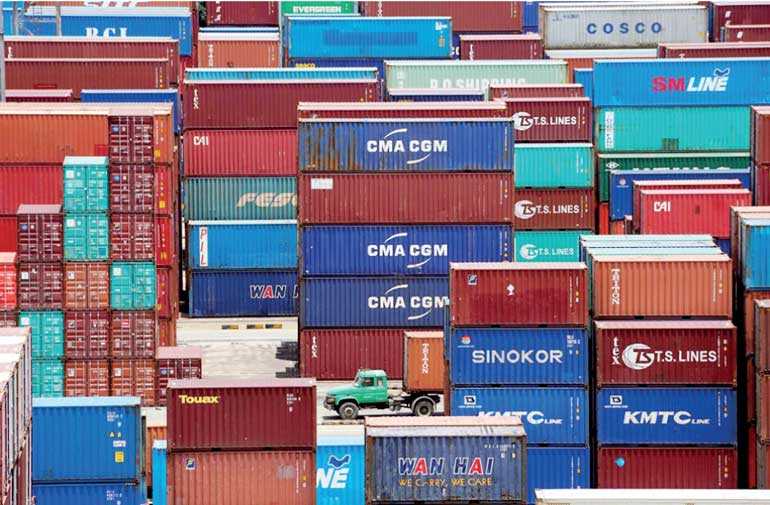Monday Mar 10, 2025
Monday Mar 10, 2025
Monday, 27 August 2018 00:31 - - {{hitsCtrl.values.hits}}

WASHINGTON/BEIJING (Reuters): US and Chinese officials ended two days of talks on Thursday with no major breakthrough as their trade war escalated with activation of another round of duelling tariffs on $16 billion worth of each country’s goods.
“We concluded two days of discussions with counterparts from China and exchanged views on how to achieve fairness, balance, and reciprocity in the economic relationship,” White House spokeswoman Lindsay Walters said in a brief emailed statement.
The discussions included “addressing structural issues in China,” including its intellectual property and technology transfer policies, Walters said.
The mid-level Trump administration officials participating in the talks would brief the heads of their agencies on the discussions, she added.
Implementation of the latest 25 percent tariffs on Thursday did not derail the talks, led by US Treasury Under Secretary David Malpass and Chinese Commerce Vice Minister Wang Shouwen. They were the first face-to-face US-China meetings since early June to try to find a way out of a deepening trade conflict and escalating tariffs.
Earlier, a senior Trump administration official downplayed chances for success, saying China had yet to address US complaints about alleged misappropriation of US intellectual property and industrial subsidies.
“In order for us to get a positive result out of these engagements, it’s really critical that they (China) address the fundamental concerns that we have raised,” the official said on a press call on the new US security review law for foreign acquisitions. “We haven’t seen that yet, but we are going to continue to encourage them to address problems that we have raised.”
In a brief statement on Friday, the Chinese commerce ministry said both sides had a “constructive” and “candid” exchange over trade issues, and will stay in touch on the next steps.
A spokeswoman at China’s embassy in Washington could not immediately be reached for comment.
China’s Commerce Ministry said in Beijing that it has filed a complaint with the World Trade Organisation over the latest round of US tariffs. The two countries have now targeted $50 billion of each other’s goods and threatened duties on most of the rest of their bilateral trade, raising concerns that the conflict could dent global economic growth.
Trump administration officials have been divided over how hard to press Beijing, but the White House appears to believe it is winning the trade war as China’s economy slows and its stock markets tumble.
Economists reckon that every $100 billion of imports hit by tariffs would reduce global trade by around 0.5 percent.
They have assumed a direct impact on China’s economic growth in 2018 of 0.1 to 0.3 percentage point, and somewhat less for the United States, but the impact will be bigger next year, along with collateral damage for other countries and companies tied into China’s global supply chains.
Business groups expressed hope that the meeting would mark the start of serious negotiations over Chinese trade and economic policy changes demanded by Trump.
However, Trump on Monday told Reuters in an interview he did not “anticipate much” from this week’s talks.
His hard line has rattled Beijing and spurred rare criticism within the highest levels of China’s ruling Communist Party over its handling of the trade dispute, sources have said.
Beijing has denied US allegations it systematically forces the unfair transfer of US technology and has said it adheres to World Trade Organization rules.
Foreign Ministry spokesman Lu Kang would not reveal any details of the talks during a daily news briefing.
“We hope that the US side can meet China halfway, and with a rational, pragmatic attitude, conscientiously with China get a good result,” Lu said.
Washington’s latest tariffs apply to 279 product categories, including semiconductors, plastics, chemicals and railway equipment, that the Office of the US Trade Representative has said benefit from Beijing’s “Made in China 2025” industrial plan to make China competitive in high-tech industries.
China’s list of 333 US product categories hit with duties includes coal, copper scrap, fuel, steel products, buses and medical equipment.
Though it is too early for trade damage to show up in much economic data, tariffs are beginning to increase costs for consumers and businesses on both sides of the Pacific, forcing companies to adjust supply chains and pricing, with some US companies looking to decrease reliance on China.
John Neuffer, president of the Semiconductor Industry Association, said the tariffs would hurt US companies more than Chinese firms, since most semiconductor products imported from China started out as chips fabricated in the United States.
“Putting tariffs on semiconductors specifically doesn’t give the administration additional leverage. The Chinese don’t sell their own semiconductors to America so Chinese enterprises won’t be hurt by this,” Neuffer said.
Discover Kapruka, the leading online shopping platform in Sri Lanka, where you can conveniently send Gifts and Flowers to your loved ones for any event including Valentine ’s Day. Explore a wide range of popular Shopping Categories on Kapruka, including Toys, Groceries, Electronics, Birthday Cakes, Fruits, Chocolates, Flower Bouquets, Clothing, Watches, Lingerie, Gift Sets and Jewellery. Also if you’re interested in selling with Kapruka, Partner Central by Kapruka is the best solution to start with. Moreover, through Kapruka Global Shop, you can also enjoy the convenience of purchasing products from renowned platforms like Amazon and eBay and have them delivered to Sri Lanka.
Discover Kapruka, the leading online shopping platform in Sri Lanka, where you can conveniently send Gifts and Flowers to your loved ones for any event including Valentine ’s Day. Explore a wide range of popular Shopping Categories on Kapruka, including Toys, Groceries, Electronics, Birthday Cakes, Fruits, Chocolates, Flower Bouquets, Clothing, Watches, Lingerie, Gift Sets and Jewellery. Also if you’re interested in selling with Kapruka, Partner Central by Kapruka is the best solution to start with. Moreover, through Kapruka Global Shop, you can also enjoy the convenience of purchasing products from renowned platforms like Amazon and eBay and have them delivered to Sri Lanka.